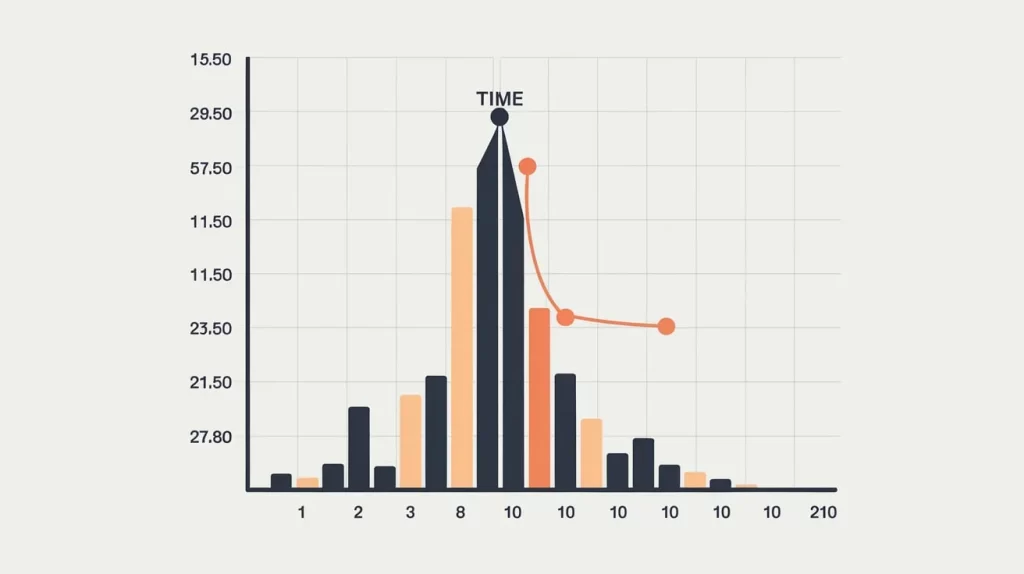When managing DNS records, one setting that can significantly impact your website’s performance and accessibility is A record TTL. While A records map domain names to IP addresses, TTL (Time to Live) determines how long DNS servers should cache the A record before checking for updates. This setting plays a vital role in balancing performance and the need for up-to-date information. We’ll explore A record TTL, what it means, how it affects your domain, and best practices for setting it. Additionally, we’ll discuss how to troubleshoot TTL issues to ensure your DNS functions optimally.

Introduction
A record TTL is a critical yet often overlooked aspect of DNS management. When you configure A records for your domain, setting the TTL value correctly ensures that users can access your site efficiently without long delays. Whether you’re running a simple website or a complex web application, TTL settings influence how quickly DNS updates propagate and how often DNS resolvers cache your records.
In simple terms, TTL is a timer that specifies how long a DNS resolver should keep a cached version of your A record before making a fresh request for that record. If TTL is too long, updates to your DNS records may not reflect quickly. If it’s too short, DNS servers will need to query more frequently, which could lead to performance issues.
This article will help you understand the importance of TTL settings and provide guidance on how to configure them for better DNS performance.
Related Posts:
- A Record TTL: What It Is and How It Affects Your Domain
- A Record vs. CNAME Record: What’s the Difference?
- Common DNS Issues Related to A Records and How to Fix Them
What TTL (Time to Live) Means in DNS Terms
In DNS, Time to Live (TTL) refers to the length of time a DNS resolver (such as a user’s local DNS server) is allowed to cache a DNS record. TTL is measured in seconds, and it indicates how long the cached version of a record remains valid before the DNS resolver queries the authoritative DNS server again for an updated record.
When a user types in a website URL, their device sends a DNS query to resolve the domain name into an IP address. The first DNS server to respond is typically the authoritative DNS server for that domain, which then provides the correct IP address. Once the DNS resolver has the IP address, it will cache that information for the duration specified by the TTL value.
For example, if the TTL is set to 3600 seconds (1 hour), the DNS resolver will store the IP address for 1 hour before querying the authoritative server again.
Why TTL Settings Matter for A Records
For A records, TTL plays an important role because it affects how often the cached IP address is refreshed. If your A record points to a server that frequently changes its IP address (e.g., a load balancer or dynamic IP address), you may want a shorter TTL to ensure users always get the most up-to-date information.
On the other hand, if your A record points to a stable, unchanging server, a longer TTL can reduce the number of DNS queries made, speeding up access and reducing the load on your DNS servers.

Section 1: How TTL Affects DNS Propagation
TTL is crucial when it comes to DNS propagation. This term refers to the process by which DNS changes are updated across the entire global DNS system. The TTL value determines how quickly DNS servers will recognize and propagate updates to a particular A record. A higher TTL means that changes will take longer to take effect, while a lower TTL ensures faster updates.
What Happens When TTL is Set Too High or Too Low
TTL Set Too High
When TTL is set too high, DNS resolvers will cache your A record for a long time, which may result in delayed propagation of DNS updates. If you change the IP address of your domain (for example, moving to a new server), users may still be directed to the old server until the cached TTL expires. This could cause users to see outdated content or experience downtime until the DNS record is updated across all resolvers.
Example: If you set TTL to 86400 seconds (24 hours), and you change the IP address of your server, it could take up to 24 hours for the new IP address to be reflected globally.
TTL Set Too Low
When TTL is set too low, the DNS servers will make frequent queries to the authoritative DNS server, leading to a higher load on both the DNS server and the website’s server. This can negatively impact website performance, causing delays and a poor user experience, as the DNS lookup process happens more often than necessary.
Example: A TTL of 60 seconds means that DNS resolvers will query the authoritative server every minute, which can increase traffic to the DNS server unnecessarily.
The Balance Between Cache and DNS Updates
The ideal TTL setting strikes a balance between caching and updating DNS records. While caching improves DNS resolution times by reducing queries, frequent updates (due to a low TTL) can lead to performance issues. On the other hand, setting a high TTL value can slow down the propagation of changes.
Finding the right TTL for your A records is essential to ensure both fast access to your domain and timely updates when changes are made.
Related Posts:
- How A Records Impact Website Performance and SEO
- How to Set Up an A Record for Your Website
- Setting Up Records for Email and Other Services: DNS Setup
Section 2: Best Practices for Setting A Record TTL
When configuring the TTL for your A records, it’s important to consider the stability of your IP address and how often you expect to make changes. Here are some best practices:
When to Use Short TTLs (For Frequent IP Address Changes)
If you expect to make frequent changes to your A record, such as updating your IP address (e.g., for a dynamic IP or load balancing), it is recommended to use a short TTL. This ensures that DNS resolvers will check for updates more frequently, minimizing the amount of time users are directed to outdated IP addresses.
- TTL Range: 300 seconds (5 minutes) to 1800 seconds (30 minutes)
- Ideal For: Load balancers, dynamic IP addresses, or websites that frequently change servers.
When to Use Long TTLs (For Stable IP Addresses)
If your A record points to a stable, static IP address that rarely changes, you can use a longer TTL. This reduces the load on your DNS servers and speeds up DNS resolution for users, as the IP address is cached for a longer period.
- TTL Range: 86400 seconds (24 hours) to 604800 seconds (7 days)
- Ideal For: Static IP addresses, dedicated servers, or websites that rarely need DNS updates.
Section 3: Troubleshooting TTL Issues
Incorrect TTL settings can lead to various DNS resolution problems, such as slow website loading times, downtime, or users being directed to outdated IP addresses. Here’s how to troubleshoot common TTL-related issues:
How Incorrect TTL Settings Can Cause DNS Resolution Problems
- Slow DNS Propagation: If you set TTL too high and change the IP address of your server, users may still be directed to the old server until the TTL expires. This causes delays in DNS propagation.
- Website Downtime: If TTL is too low, it can put unnecessary load on your DNS servers, causing slower DNS responses and potentially leading to website downtime if your DNS infrastructure is not properly scaled.
- Inconsistent User Experience: If different users are seeing different versions of your website (due to outdated DNS records), it can create a fragmented and frustrating user experience.
How to Adjust TTL for Optimal Performance
To optimize TTL settings, consider the following:
- Monitor DNS performance: Use tools like Pingdom or GTmetrix to monitor DNS resolution times and adjust TTL values accordingly.
- Adjust TTL based on the server’s stability: If you have a dynamic IP or expect frequent changes, set a shorter TTL. For a static IP, use a longer TTL to reduce the frequency of DNS lookups.
Key Takeaways
TTL (Time to Live) is an essential setting in DNS management that controls how long a DNS resolver caches a record. When configuring A records, finding the optimal TTL value is critical for balancing the need for up-to-date information and DNS performance. Short TTLs are ideal for frequently changing IP addresses, while long TTLs work well for stable IP addresses.
Recap of TTL Best Practices for A Records
- Use short TTLs for dynamic IP addresses or when frequent changes are expected.
- Use long TTLs for static IP addresses to improve performance and reduce DNS query load.
- Regularly monitor your DNS performance and adjust TTL as necessary for optimal results.
- TTL determines how long DNS resolvers cache your A records.
- Set short TTLs for dynamic IP addresses and long TTLs for static ones.
- Incorrect TTL settings can lead to slow propagation, downtime, and inconsistent user experiences.
- Regularly monitor your TTL settings and adjust them based on server stability and website needs.
FAQs
What is the purpose of TTL in DNS records?
TTL (Time to Live) determines how long a DNS record is cached by DNS resolvers before they query the authoritative server for an updated record.
How does TTL affect website performance?
A high TTL can reduce DNS query load and speed up website access, while a low TTL ensures faster updates but may increase query frequency and server load.
What happens if I set TTL too high?
Setting TTL too high can delay DNS propagation and prevent updates to A records from taking effect quickly, causing users to be directed to outdated IP addresses.
How can I fix TTL issues?
Adjust TTL settings based on the frequency of DNS changes. For stable IP addresses, use long TTLs; for dynamic IPs, use short TTLs to ensure quick updates.
How often should I update TTL settings?
TTL settings should be updated when you change IP addresses or anticipate frequent DNS changes. Regular monitoring helps avoid potential issues.
What is the ideal TTL for my A record?
The ideal TTL depends on the stability of your IP address. For dynamic IPs, use 300–1800 seconds; for static IPs, use 86400 seconds or longer.
